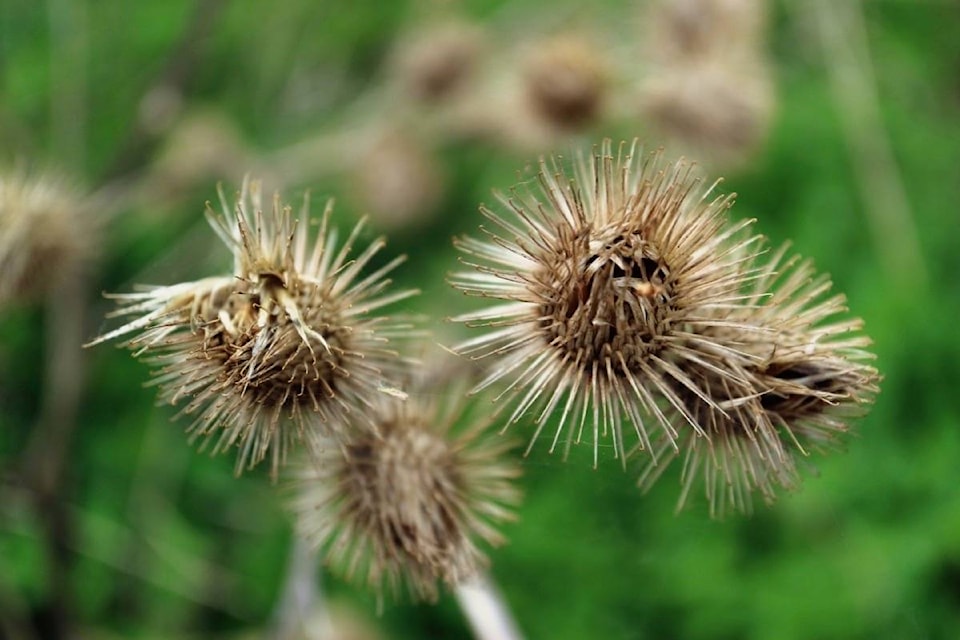By Catherine Tarasoff
It’s been a long winter, and many of us are looking forward to getting outside and hitting the trails. Did you know that as we traverse through muddy areas, we are inadvertently picking up invasive plant seeds and transporting them along the trail?
Whether you’re a hiker, biker, horseback rider, or off-roader, there are some simple actions you can carry out to stop invasive species in your tracks.
Time your excursions: Spring weather is unpredictable, leaving trails dry one day and a wet, muddy mess the next. Avoid muddy trails, particularly ones where invasive plants are known to occur. Time your adventure on the trails when conditions are dry, and avoid travelling through areas where invasive plants exist.
Plan Your Route: When setting out on the trails, plan your route according to topography. Early in the season, stick to low elevation and south-exposed trails. This is recommended because bottom valley temperatures can be 10° C warmer than higher elevation areas, and south-facing slopes warm up much faster than north-facing slopes.
These areas are much drier earlier on in the year, reducing the potential for tracking mud contaminated with invasive plant seeds up and down the trails. Also, avoid trails that lead over to a northern exposure; these trails will undoubtedly have shade trees, and you are likely to run into mud or even snow.
Identify Invasive Plants: Being able to identify invaders is key to avoiding them! Cellphone apps like iNaturalist and WeedsBMP are great tools to help you identify some of our local invasives.
At this time of year, recognizing the skeleton of last year’s plant is a useful tool for invasive plant identification. For example, the skeletons of spotted knapweed and burdock are easily recognized by their seed heads, which are just waiting to hitch a ride and spread last year’s seeds.
There is no golden rule as to when the trails will be dry enough for recreation in the spring. However, you can plan your activities to reduce the risk of getting a little mud on your tires, boots, or hooves and help prevent the spread of invasive plants.
No matter where you are exploring, have fun and practice “Play-Clean-Go” to stop invasive species in your tracks:
COME CLEAN: Remove plants and mud from your footwear, gear, and pets before exploring.
STAY on designated trails to reduce the chance of picking up seeds and mud that carry invasive plants.
LEAVE CLEAN: Remove plant and mud from your footwear, gear, and pets after exploring.
Catherine Tarasoff is the Education and Outreach Coordinator for the Thompson-Nicola Invasive Plant Management Committee (check their Facebook page). This season, articles are dedicated to “Stopping Invasive Species in Your Tracks! Tools and tips for preventing invasive species while enjoying the outdoors”. Look for more resources at www.tnipmc.com.
editorial@accjournal.ca
Like us on Facebook and follow us on Twitter
